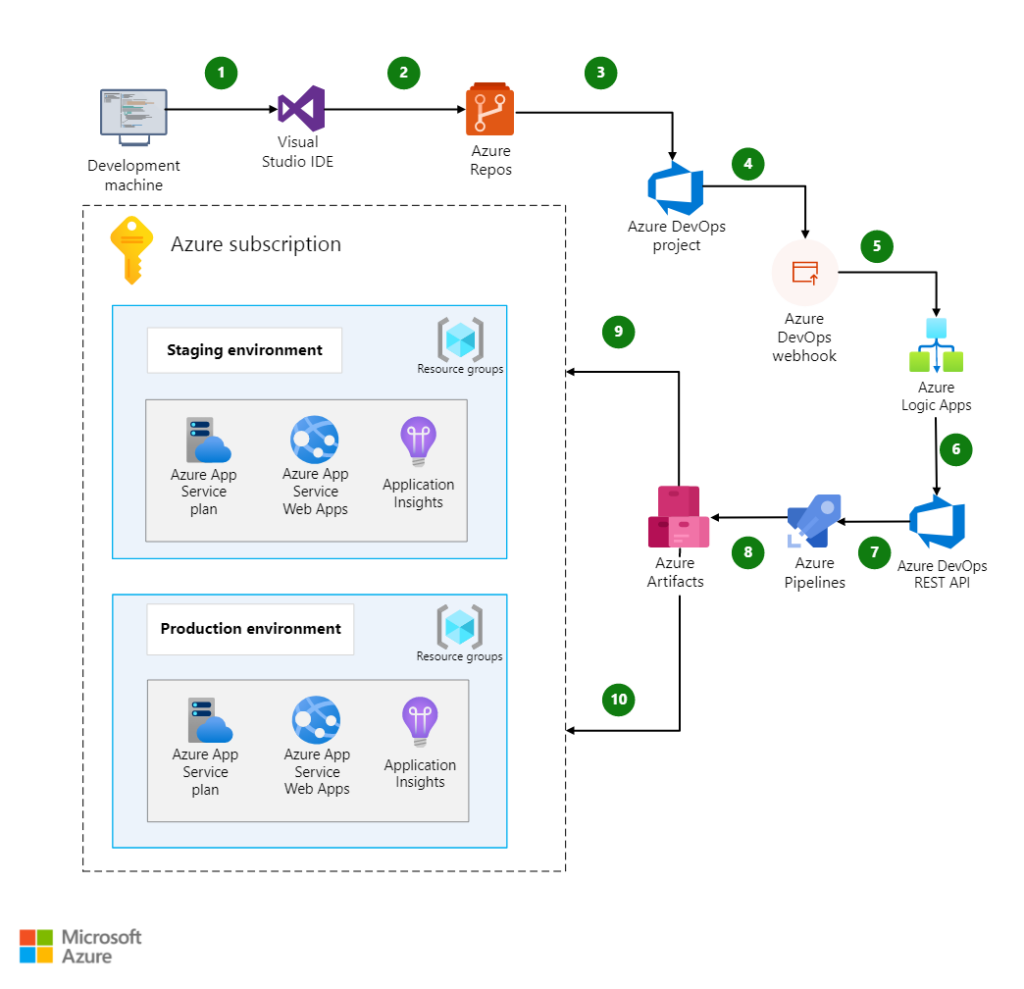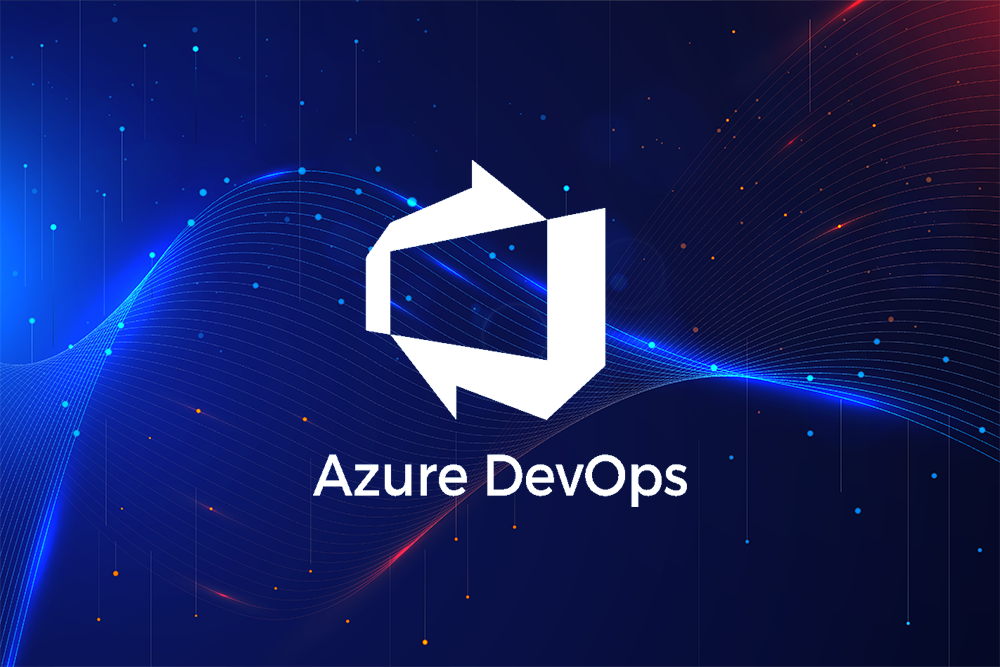Large-scale enterprises are increasingly turning towards Azure DevOps as a solution for managing complex projects. Azure DevOps, a suite of development tools from Microsoft, supports a culture and set of processes that bring developers and project managers together to complete software development.
It enables teams to plan work, collaborate on code development, and build and deploy applications. This strategic approach is vital for organisations aiming to streamline their operations and enhance collaboration. Furthermore, professionals seeking to excel in this domain can greatly benefit from various DevOps Courses tailored to enhance understanding and proficiency in Azure DevOps.
Table of Contents
- Best Practices for Implementing Azure DevOps in Large-Scale Enterprises
- Embrace a Culture of Continuous Learning
- Implement a Collaborative Environment
- Prioritize Automation
- Invest in Continuous Integration and Continuous Deployment (CI/CD)
- Manage Configurations and Secrets Securely
- Adopt Agile Methodologies
- Focus on Monitoring and Feedback
- Ensure Compliance and Security
- Plan for Disaster Recovery and High Availability
- Foster a Blame-Free Culture
- Conclusion
Best Practices for Implementing Azure DevOps in Large-Scale Enterprises
Large-scale enterprises are increasingly turning towards Azure DevOps to manage complex projects. Azure DevOps, a suite of development tools from Microsoft, supports a culture and set of processes that bring developers and project managers together to complete software development.
It enables teams to plan work, collaborate on code development, and build and deploy applications. This strategic approach is vital for organisations aiming to streamline their operations and enhance collaboration. Furthermore, professionals seeking to excel in this domain can greatly benefit from various DevOps Courses tailored to enhance understanding and proficiency in Azure DevOps.
1. Embrace a Culture of Continuous Learning
Encourage DevOps Courses: Enterprises should encourage their IT and development teams to enrol in Azure DevOps courses. This helps in building a solid foundation and understanding of best practices in DevOps.
Promote Cross-Training: Facilitate cross-training among teams. This promotes a deeper understanding of different roles and encourages collaboration and innovation.
2. Implement a Collaborative Environment
Foster Team Collaboration: Azure DevOps tools like Azure Boards and Azure Repos improve team collaboration, breaking down silos and promoting open communication.
Use Pull Requests and Code Reviews: Encourage developers to use pull requests and conduct code reviews. This practice helps maintain code quality and knowledge sharing among team members.
3. Prioritise Automation
Automate Repetitive Tasks: Identify and automate repetitive tasks to increase efficiency. Azure Pipelines can be used for continuous integration and delivery, helping teams to automate the build, test, and deployment phases.
Implement Infrastructure as Code (IaC): Use Azure Resource Manager or Terraform to manage infrastructure through code, which helps maintain consistency and ease of deployment across environments.

4. Invest in Continuous Integration and Continuous Deployment (CI/CD)
Develop CI/CD Pipelines: Implement continuous integration and deployment pipelines using Azure Pipelines. This ensures that code changes are automatically built, tested, and deployed, reducing manual errors and speeding up the release process.
Monitor and Optimise Pipelines: Regularly monitor and optimise CI/CD pipelines for performance and efficiency. Use analytics and feedback to make data-driven improvements.
5. Manage Configurations and Secrets Securely
Utilise Azure Key Vault: Securely store and manage application secrets like tokens, passwords, and certificates using Azure Key Vault.
Implement Role-Based Access Control (RBAC): Define and implement role-based access controls to ensure that only authorised personnel have access to sensitive information and configurations.

6. Adopt Agile Methodologies
Implement Agile Frameworks: Integrate Agile methodologies like Scrum or Kanban with Azure Boards to plan, track, and discuss work among teams.
Regularly Review and Adapt Processes: Continuously assess and adapt your Agile processes to meet the evolving needs of projects and teams.
7. Focus on Monitoring and Feedback
Implement Monitoring Solutions: Use Azure Monitor and Application Insights to gain insights into application performance and user behaviour.
Establish Feedback Loops: Create mechanisms for regular feedback from end-users and stakeholders. Use this feedback to make informed decisions and continuous improvements.
8. Ensure Compliance and Security
Regular Security Audits: It is recommended to perform routine security audits and leverage Azure Security Center to detect and address any vulnerabilities. Ensure proper identification and mitigation of security risks to maintain a secure environment.
Compliance Monitoring: Monitor compliance with industry standards and regulations using Azure’s built-in compliance features.

9. Plan for Disaster Recovery and High Availability
Implement Disaster Recovery Plans: Utilise Azure’s disaster recovery tools like Azure Site Recovery to ensure business continuity.
Design for High Availability: Design your infrastructure and applications for high availability to minimise downtime and service disruptions.
10. Foster a Blame-Free Culture
Encourage Open Communication: Promote a culture where team members can openly discuss challenges and failures without fear of blame. This encourages learning from mistakes and continuous improvement.
Conduct Blameless Postmortems: After any incident, it is important to conduct a postmortem analysis to understand what occurred, why it happened, and how similar incidents can be prevented in the future. It is crucial to carry out this analysis without assigning blame to anyone involved.
Conclusion
A comprehensive strategy, including training, cooperation, automation, and continual improvement, is necessary for large-scale organisations to use Azure DevOps. Better efficiency and creativity are all possible outcomes for businesses adopting these best practices. To keep up with the ever-changing landscape of Azure DevOps, professionals must engage in constant learning and take Programming & DevOps Courses. These courses provide valuable insights into the evolving field of DevOps and programming, ensuring that professionals remain well-equipped to navigate the complexities of Azure DevOps while fostering innovation and efficiency in their organizations. Continuous education becomes a cornerstone for staying abreast of the latest developments and leveraging the full potential of Azure DevOps.
- What is the F-1 measure and why is it useful for imbalanced class problems?
- From Data Streams to Decentralized Worlds: Exploring the Role of Blockchain Subgraphs in Gaming Infrastructure
- How to predict customer churn using machine learning, data science and survival analysis
- Business models in data science and AI

